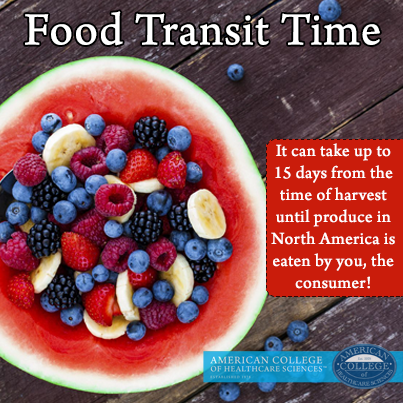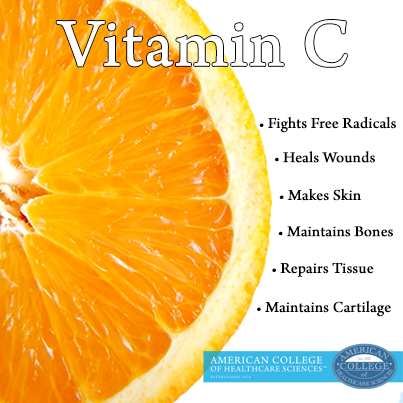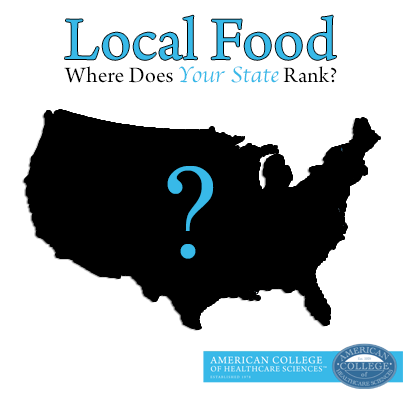Last week, a team from ACHS was fortunate enough to attend the National Association of Nutrition Professionals (NANP) Annual Conference & Expo in Tucson, Arizona. ACHS President and Founder Dorene Petersen was even presented the 2014 NANP Service Award for her extraordinary efforts at growing the holistic nutrition community!
It’s so wonderful to see so many holistic professionals and experts come together for the love of good, nutritious food! Our home state of Oregon had quite the presence at the NANP Conference—including Bob’s Red Mill, a producer of certified organic and gluten-free wholegrain products (and one of my favorite places to take kids for a field trip!). This is one of the greatest reasons I love living in Oregon: healthy, nutritious, and LOCAL food abounds!
I love supporting local farms and food producers, but I know that I’m very spoiled to live in Sherwood, Oregon. Perched at the start of the Willamette Valley—which is chock full of farms, farmers markets, restaurants that use local food—the area is a locavore and foodie paradise! But sadly, not all States support local food production, and that can make it hard to use local food as a tool to support your holistic nutrition goals.
You might be wondering, where does my state rank for local food and the availability of locally grown produce? Or you could be thinking: is local food really better for me and my community? Is it really healthier? Does it matter if it’s certified organic or conventionally grown? If so, here are a few tips and tricks to cut through the maze!
Certified Organic versus Conventional: Does it Matter?
Yes! Certified organic food matters in more ways than you may think. Here are the reasons why:
Health Benefits
While the direct health benefits of organic food are still being studied, there is evidence that certified organic food is healthier for us. A 2013 study found that fruit flies fed a 100% organic diet had greater fertility, greater activity, greater stress resistance, and lived longer than flies fed a conventional diet.[1] The study noted that an organic diet is more nutritionally balanced and provides a higher level of nutrients. However, the study does note that the reason for the added benefits remains unclear and additional research is needed.
What other factors should impact your decision for certified organic over conventional produce?
Pesticides
Pesticide residue is usually left on sprayed produce.[2] “It has been estimated that only 0.1% of applied pesticides reach the target pests, leaving the bulk of the pesticides (99.9%) to impact the environment.”[3] Pesticides may have more impact on people with lower weights, including children and the elderly. I don’t know about you, but I’ll pass on the side of pesticides with my lunch!
Food Additives
Conventional and processed foods often contain food additives such as preservatives, artificial sweeteners, coloring, and flavoring such as MSG.[4] Keep in mind that organic food can still have some additives, so always choose whole food over processed food, organic or not!
Genetically Modified Organisms (GMOs)
Conventionally grown foods may be genetically modified. Almost all conventional corn grown in the United States is GMO corn. We have no idea of the effects of GMOs on our health at this point, but preliminary research is concerning. Currently, National Organic Standards prohibit GMOs in organic foods.
Environment
Organic production is generally more environmentally friendly, but it is still a spectrum. Some organic farms operate sustainably with fewer external inputs. For example, keeping animals gives farmers manure to compost and use as fertilizer. However some large industrial style organic farms simply buy in large quantities of organic fertilizer. This is why I like to support smaller, local organic farms where possible, and I’ll support sustainable farms (even if they are not certified organic) if I can visit the farm and see exactly how they are growing my food.
You don’t need a masters in holistic nutrition (although it couldn’t hurt) to eat clean. If you’re supporting a small local business or farm, ask if you can pay them a visit and see exactly how they’re producing their product and what they’re using. This gives you more control over what you put in your body while also supporting your local economy!
 Food Transit Time
Food Transit Time
Large industrial farms are often accused of soil and water quality degradation. But here’s a statistic that doesn’t receive much press: our food travels 1,500 miles on average from farm to consumer in the United States.[5] Think about the amount of greenhouse gas emissions the transportation of our food is adding to the atmosphere. It is important to think about the environmental impact of shipping organic product to Oregon from Mexico. If you can grow some of your own food or buy from a sustainable local farm, you reduce the environmental impact of all this transportation.
Nutritional Value Can Decline Upon Harvest
Speaking of travel time, did you know the moment fruits and vegetables are harvested, they start losing nutritional value? As soon as your fruit is off the vine, tree, or bush, the nutrients could be degrading.[6] Longer transit time = potential lost nutritional value!
Consider this, produce grown in North America could be in transit for 5 days following harvest. Then it can spend up to 3 days on the shelf before being purchased. The average consumer stores them for up to 7 days prior to consumption.[7] This means the organic head of lettuce you bought earlier this week may have been harvested 15 days ago. That’s quite a long time when you’re looking for nutrient quality!
So is local food better? YES! Here’s why and how.
 We all know how important the powerhouse antioxidant vitamin C is. Just in case you need a brief refresher: the body uses vitamin C to repair tissues, make skin, blood vessels, maintain cartilage and bones, and heal wounds![8]
We all know how important the powerhouse antioxidant vitamin C is. Just in case you need a brief refresher: the body uses vitamin C to repair tissues, make skin, blood vessels, maintain cartilage and bones, and heal wounds![8]
When your fruits and vegetables are harvested, the vitamin C content begins to quickly degrade until it is consumed. For example, green beans can lose up to 77% of their vitamin C content after being stored for 7 days at 0 degrees Celsius (32 degrees Fahrenheit).[9]
What are the options?
Here are my tips:
- Buy fresh from local farmer’s markets
- Buy certified organic frozen fruits and vegetables if local fresh options are not available
- Try an organic grocery delivery service that features local and seasonal organic produce (I love OrganicsToYou.org here in Portland—you may have something similar in your area; or national grocery delivery services that specialize in organic and GMO free products (Green PolkaDot Box is a favorite of mine) (link http://www.greenpolkadotbox.com/invite/id/14595/)
- Buy shares in a community supported agriculture (CSA) program from a local sustainable or organic farm
- Plant your own veggie garden if you have the space—it is amazing how much you can produce in a relatively small raised garden bed! Check out some of our YouTube channel videos on starting seeds and gardening
- Join a community veggie garden if you don’t have your own space
In many cases, local organic products can be found at a reasonable price. So make sure you’re getting the most out of your holistic nutrition while also supporting your local economy!
And don’t forget that cooking has an impact too! As Dr. Mary Fry explained in her recent Master Lecture webinar, Cooking For Health, the way you cook your food also impacts the level of vitamin C remaining in your food.
Where Does Your State Rank?
If you’re wondering “where does my state rank for local food,” look no further! According to “Strolling of the Heifers” (I LOVE that name!) here is how each state ranks in availability of local food:[10]
51. Texas
50. Florida
49. Louisiana
48. Arizona
47. Nevada
46. New Jersey
45. Oklahoma
44. Utah
43. Georgia
42. California
41. Mississippi
40. Tennessee
39. Illinois
38. Arkansas
37. South Carolina
36. Ohio
35. Alabama
34. Missouri
33. Indiana
32. Pennsylvania
31. North Carolina
30. Delaware
29. Maryland
28. Virginia
27. New Mexico
26. Kansas
25. New York
24. Washington DC
23. West Virginia
22. Michigan
21. Washington State
20. Nebraska
19. Colorado
18. Kentucky
17. Alaska
16. Minnesota
15. Connecticut
14. South Dakota
13. Hawaii
12. Massachusetts
11. Rhode Island
10. Idaho
9. Wisconsin
8. Wyoming
7. Oregon
6. Montana
5. Iowa
4. North Dakota
3. New Hampshire
2. Maine
1. Vermont
A big shout out to those in New Hampshire, Rhode Island, Massachusetts, Connecticut, Alaska, Colorado, New York, and Delaware for all jumping up 10 spots or more from 2012 to 2013. Here in Oregon, we made a decent jump from 14th to 7th during the same time period! Watch out Vermont… we’re coming for that number one spot!
Where does your state rank? Tell me in the comments!
Disclosure of Material Connection: I am the CIO of American College of Healthcare Sciences, the Institution that publishes this blog. However, all opinions are my own. This blog may contain affiliate links. I am disclosing this in accordance with the Federal Trade Commission’s 16 CFR, Part 255: “Guides Concerning the Use of Endorsements and Testimonials in Advertising.”
This article is for informational purposes only. It is not intended to treat, diagnose, cure, or prevent disease. This article has not been reviewed by the FDA. Always consult with your primary care physician or naturopathic doctor before making any significant changes to your health and wellness routine.
References
[1] Chhabra, R., Kolli, S., & Bauer, J.H. (2013) Organically grown food provides health benefits to Drosophila melanogaster. PLOS One. DOI: 10.1371/journal.pone.0052988
[2] Mayo Clinic Staff. (2012) Organic foods: are they safer? More nutritious? Retrieved from http://www.mayoclinic.org/healthy-living/nutrition-and-healthy-eating/in-depth/organic-food/art-20043880
[3] Horrigan, L., Lawrence, R.S., Walker, P. (2002, May). How sustainable agriculture can address the environmental and human health harms of industrial agriculture. [Review]. Environmental Health Perspectives, 110(5). 445-456. Retrieved from http://www.ncbi.nlm.nih.gov/pmc/articles/PMC1240832/pdf/ehp0110-000445.pdf
[4] Mayo Clinic Staff. (2012) Organic foods: are they safer? More nutritious? Retrieved from http://www.mayoclinic.org/healthy-living/nutrition-and-healthy-eating/in-depth/organic-food/art-20043880
[5] DeWeerdt, S. (2009, May). Is local food better? World Watch Magazine, 22(3). Retrieved from http://www.worldwatch.org/node/6064
[6] Barrett, D.M. (2007). Maximizing the nutritional value of fruits and vegetables. Food Technology 61(4):40-44. Retrieved from http://ucce.ucdavis.edu/files/datastore/234-780.pdf
[7]Ibid.
[8] Medline Plus. (2013, February 18). Vitamin C. Retrieved from http://www.nlm.nih.gov/medlineplus/ency/article/002404.htm
[9] Barrett, D.M. (2007). Maximizing the nutritional value of fruits and vegetables. Food Technology 61(4):40-44. Retrieved from http://ucce.ucdavis.edu/files/datastore/234-780.pdf
[10] Strolling of the Heifers (2013). Stroll’s 2013 Locavore Index ranks states in terms of commitment to local foods. Retrieved from http://www.strollingoftheheifers.com/locavore-index-2013/





